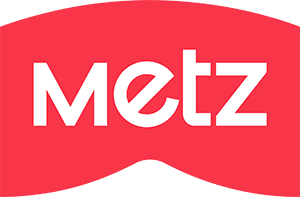Unlocking the Benefits of High Protein Raw Dog Food for Your Pet
Unlocking the Benefits of High Protein Raw Dog Food for Your Pet
Table of Contents
1. Introduction to High Protein Raw Dog Food
2. What is Raw Dog Food?
3. Benefits of High Protein Raw Dog Food
4. Nutritional Components of High Protein Raw Dog Food
5. Selecting the Right High Protein Raw Dog Food
6. Transitioning to High Protein Raw Dog Food
7. Common Misconceptions ab
2025/05/23
Unlocking the Benefits of High Protein Raw Dog Food for Your Pet
Table of Contents
- 1. Introduction to High Protein Raw Dog Food
- 2. What is Raw Dog Food?
- 3. Benefits of High Protein Raw Dog Food
- 4. Nutritional Components of High Protein Raw Dog Food
- 5. Selecting the Right High Protein Raw Dog Food
- 6. Transitioning to High Protein Raw Dog Food
- 7. Common Misconceptions about Raw Dog Food
- 8. Frequently Asked Questions
- 9. Conclusion
1. Introduction to High Protein Raw Dog Food
The pet food market has evolved significantly over the years, with an increasing number of pet owners gravitating towards natural and nutrient-rich options. One such option gaining popularity is **high protein raw dog food**. This dietary choice mimics the ancestral diet of dogs, providing them with essential nutrients in a biologically appropriate form. As we dive deeper into this subject, we will uncover the myriad benefits associated with raw dog food, particularly its high protein variants.
2. What is Raw Dog Food?
Raw dog food, often referred to as a **BARF diet (Biologically Appropriate Raw Food)** or **RAW diet**, consists primarily of uncooked animal products. This includes **muscle meat**, **organs**, and **bones**, often supplemented with fruits and vegetables. The aim is to replicate the natural diet of wild canines, which is inherently high in protein and low in carbohydrates. Understanding what constitutes raw dog food is crucial for any pet owner considering this dietary shift.
3. Benefits of High Protein Raw Dog Food
The high protein content found in raw dog food offers numerous benefits that can significantly impact your pet's health:
3.1 Enhanced Muscle Development and Maintenance
Protein is fundamental for **muscle growth** and **repair**. A dog on a high protein raw diet will likely experience improved muscle development, which is especially beneficial for active dogs or those involved in sports.
3.2 Improved Energy Levels
High protein diets provide dogs with sustained energy. Unlike high-carb diets that can lead to energy spikes and crashes, protein supports steady energy levels throughout the day.
3.3 Healthy Coat and Skin
The health of your dog’s coat often reflects their overall well-being. High protein raw dog food can lead to a shinier, healthier coat and reduce skin issues due to its rich content of essential fatty acids.
3.4 Stronger Immune System
A diet rich in high-quality protein supports the immune system. Proteins are essential for the production of antibodies, hormones, and enzymes that help fend off illnesses and maintain good health.
3.5 Better Digestion
Dogs are carnivorous animals, and their digestive systems are well equipped to process raw meat. High protein raw dog food can improve digestive health and reduce the incidence of bloating and gas.
4. Nutritional Components of High Protein Raw Dog Food
To fully appreciate the benefits of high protein raw dog food, it's essential to understand its nutritional components:
4.1 Quality Animal Protein Sources
Look for dog food that includes quality protein sources such as chicken, beef, turkey, or lamb. These meats provide necessary amino acids that support various bodily functions.
4.2 Essential Fats
Healthy fats, like omega-3 and omega-6 fatty acids found in fish oil, are vital for maintaining skin and coat health, as well as supporting brain function.
4.3 Vitamins and Minerals
Incorporating a variety of fruits and vegetables helps provide essential vitamins and minerals, ensuring a well-rounded diet. Ingredients like sweet potatoes, carrots, and spinach add nutritional value.
4.4 Hydration
Raw dog food often has a higher moisture content than dry kibble, which can aid in hydration and support urinary tract health.
5. Selecting the Right High Protein Raw Dog Food
Choosing the right high protein raw dog food requires careful consideration. Here are some factors to keep in mind:
5.1 Ingredient Quality
Always opt for brands that source their ingredients from reputable suppliers. Look for whole meats and avoid by-products and fillers.
5.2 Nutritional Balance
Ensure that the raw dog food provides a balanced diet, including protein, fats, vitamins, and minerals. It’s essential that the food meets AAFCO (Association of American Feed Control Officials) standards.
5.3 Brand Reputation
Research brands for their reputation in the market. Read reviews and seek recommendations from other dog owners or veterinarians.
5.4 Purchase Options
Raw dog food can be found in several forms, including frozen, freeze-dried, and dehydrated. Choose the option that best suits your lifestyle and storage capabilities.
6. Transitioning to High Protein Raw Dog Food
Making the switch to high protein raw dog food should be done gradually to prevent digestive upset. Here’s how to do it:
6.1 Start Slow
Begin by mixing a small amount of raw food with your dog’s current food, gradually increasing the raw portion over a week or two.
6.2 Monitor Your Dog's Response
Watch for any signs of digestive discomfort, such as vomiting or diarrhea. If these occur, slow down the transition process.
6.3 Maintain Variety
Incorporate different protein sources and add fruits and vegetables to provide a well-rounded diet. This variety can help prevent food sensitivities.
7. Common Misconceptions about Raw Dog Food
Despite its benefits, there are several misconceptions about high protein raw dog food:
7.1 Raw Diets are Dangerous
Many believe raw diets pose health risks. When properly managed and sourced from reputable suppliers, raw food can be safe and beneficial.
7.2 Dogs Can’t Digest Raw Food
Dogs have evolved to digest raw meat efficiently. Their digestive systems are designed for high-protein diets, contrary to popular belief.
7.3 Raw Diets are Too Expensive
While some raw dog foods can be pricey, many affordable options are available, especially if you prepare the food yourself.
8. Frequently Asked Questions
8.1 Can all dogs eat high protein raw food?
While many dogs thrive on high protein raw diets, it's essential to consult your veterinarian, particularly for puppies, senior dogs, or those with health issues.
8.2 How do I know if my dog is getting enough protein?
Signs of adequate protein intake include healthy weight, shiny coat, and steady energy levels. Regular check-ups with a vet can also help assess your dog’s nutritional status.
8.3 Can raw dog food lead to nutritional imbalances?
If not properly balanced, raw diets can result in nutritional deficiencies. It's crucial to follow guidelines and consider consulting a pet nutritionist.
8.4 Is it safe to feed raw dog food to puppies?
Puppies have specific nutritional needs, and while they can eat raw food, it’s best to rely on vet recommendations to ensure a balanced diet.
8.5 How should I store raw dog food?
Raw dog food should be stored in the freezer until ready to use, and any thawed food must be kept in the refrigerator and used within a few days.
9. Conclusion
High protein raw dog food presents numerous advantages that can significantly enhance your pet's health and overall quality of life. By understanding the benefits, nutritional components, and proper selection process, pet owners can make informed decisions that contribute to their dog's well-being. Transitioning to a high protein raw diet, while considering potential misconceptions and maintaining variety, can set your furry friend on a path to thriving health. Embrace the power of a high protein raw diet and witness the positive changes in your pet's life.
Key words:
Previous Page:
Contact Us
Address:
No. 22, Jingxing Road, Economic and Technological Development Zone, Nantong, Jiangsu Province.
E-mail:
panghuiqiang@metzpet.com
Contact Phone:
+86-18862996617














